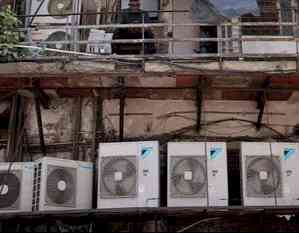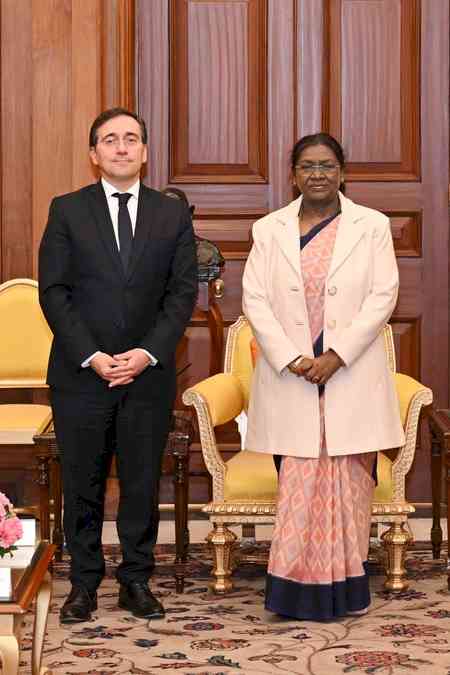Measures could slash 60% predicted 2050 emissions from cooling sector: UN report
Taking key measures to reduce the power consumption of cooling equipment would cut at least 60 per cent of predicted 2050 sectoral emissions, provide universal access to life-saving cooling, take the pressure off energy grids and save trillions of dollars by 2050, a new report published on Tuesday during the COP28 climate talks in Dubai.

Dubai, Dec 5 (IANS) Taking key measures to reduce the power consumption of cooling equipment would cut at least 60 per cent of predicted 2050 sectoral emissions, provide universal access to life-saving cooling, take the pressure off energy grids and save trillions of dollars by 2050, a new report published on Tuesday during the COP28 climate talks in Dubai.
The global cooling watch report, ‘Keeping it Chill: How to meet cooling demands while cutting emissions’, by the UN Environment Programme-led Cool Coalition lays out sustainable cooling measures in three areas: passive cooling, higher-energy efficiency standards, and a faster phase down of climate-warming refrigerants.
Following the measures outlined in these areas would deliver the 60 per cent cuts; adding rapid power grid decarbonization would reduce sectoral emissions by 96 per cent.
The report was released in support of the Global Cooling Pledge, a joint initiative between the UAE as host of COP28 and the Cool Coalition.
Today, over 60 countries signed up to the pledge with commitments to reduce the climate impact of the cooling sector.
“As temperatures rise, it is critical that we work together to improve energy efficiency and reduce emissions from the cooling sector while increasing access to sustainable cooling. This access is especially important for the most vulnerable communities, who have often contributed the least to climate change but are the most exposed to its impacts,” said Sultan Al Jaber, COP28 President.
“The cooling sector must grow to protect everyone from rising temperatures, maintain food quality and safety, keep vaccines stable and economies productive,” said Inger Andersen, Executive Director of UNEP.
“But this growth must not come at the cost of the energy transition and more intense climate impacts. Countries and the cooling sector must act now to ensure low-carbon cooling growth. Fortunately, the solutions are available today. Getting energy efficient, sustainable cooling right offers an opportunity to cut global warming, improve the lives of hundreds of millions of people, and realize huge financial savings.”
Climate change, population and income growth, and urbanization are increasing cooling demand, which is necessary to meet the Sustainable Development Goals.
Around 1.2 billion people in Africa and Asia lack access to cooling services, putting lives at risk from extreme heat, reducing farmers’ incomes, driving food loss and waste, and hindering universal vaccine access.
As temperatures rise, it is critical that we work together to improve energy efficiency and reduce emissions from the cooling sector while increasing access to sustainable cooling. This access is especially important for the most vulnerable communities, who have often contributed the least to climate change but are the most exposed to its impacts.
On current growth trends, cooling equipment represents 20 per cent of total electricity consumption today -- and is expected to more than double by 2050.
Greenhouse gas emissions from power consumption will increase, alongside leakage of refrigerant gases, most of which have a much higher global warming potential than carbon dioxide.
Under a business-as-usual scenario, emissions from cooling are predicted to account for more than 10 per cent of global emissions in 2050.
Rising demand for often inefficient equipment, including air-conditioners and refrigerators, will require large investments in electricity generation and distribution infrastructure.
Inefficient equipment will also result in high electricity bills for end users, particularly in Africa and South Asia, where the fastest growth is predicted.


 IANS
IANS 










